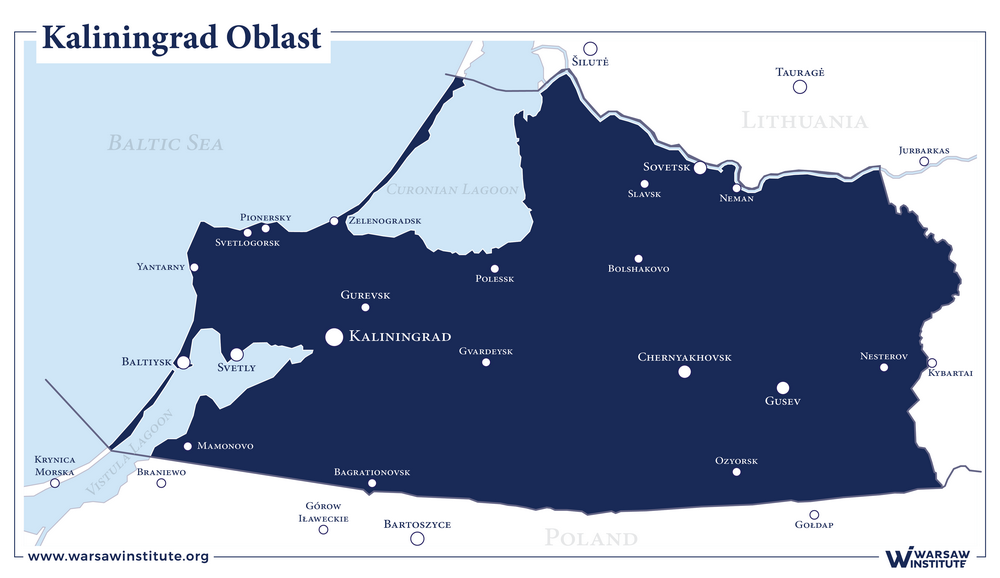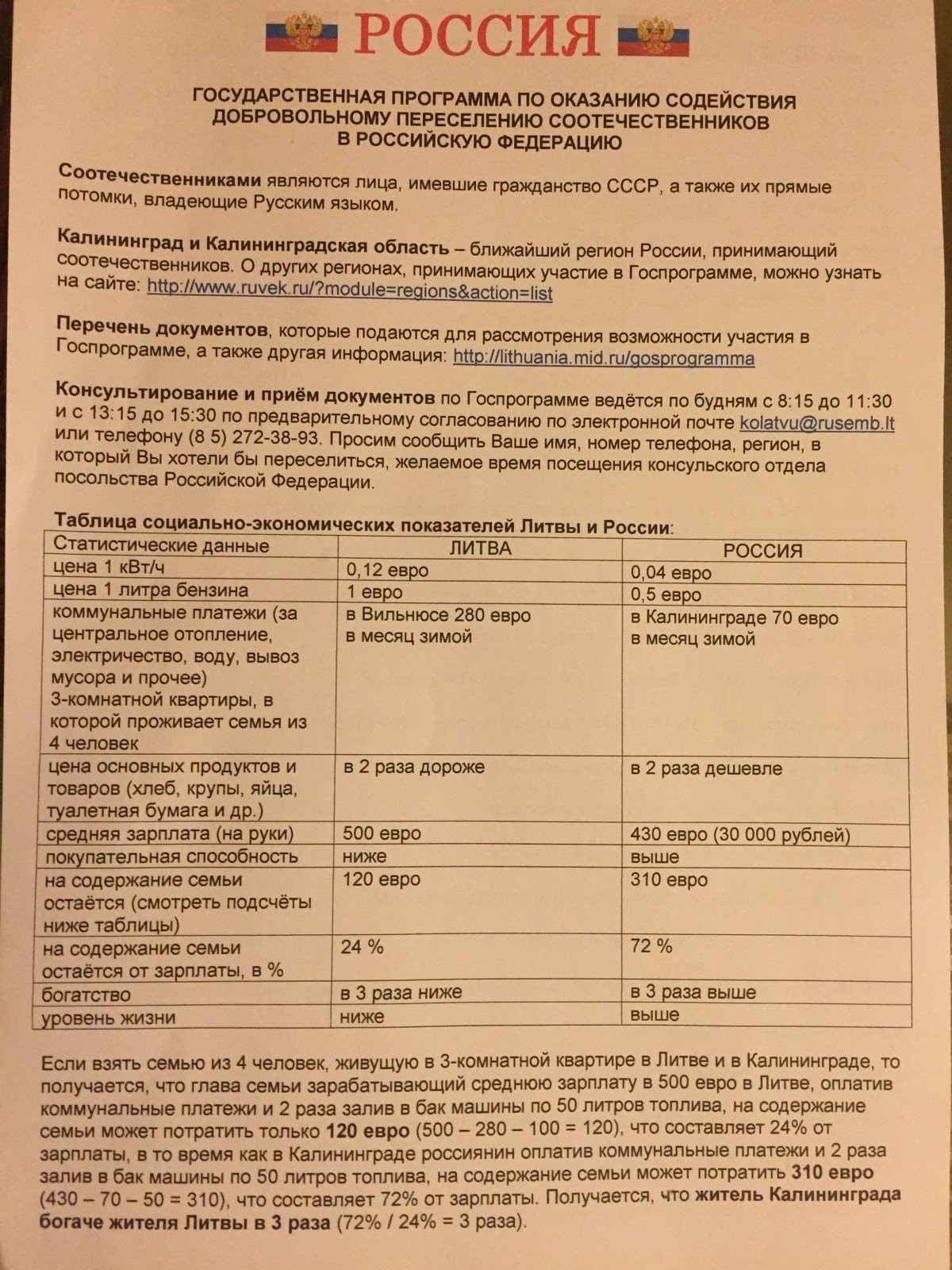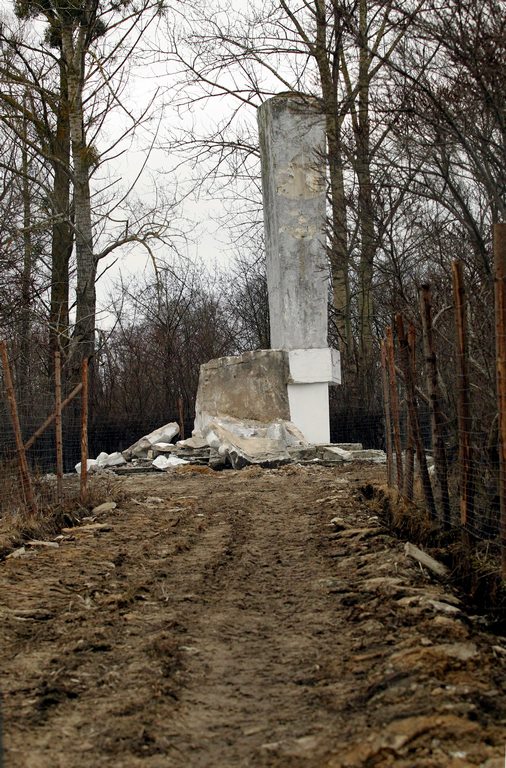THE WARSAW INSTITUTE REVIEW
Date: 1 May 2018 Author: Aleksander Król
Kaliningrad’s island of misfortunes — a Russian offensive from Kaliningrad
The Kaliningrad Region, also called Russia’s island in Europe, is mainly associated with the military threat it poses. The Russian missile systems deployed there and their fleet operating on the Baltic Sea, act upon the imaginations of its neighbors. As such the issue of further militarization presents a serious threat to NATO countries.

Military and psychological factors, however, are not the only dimension of the challenges to the security of states in the region. The Russian exclave on the Baltic Sea is the staging area for Russian intelligence services operating in Poland and Lithuania, but also the nerve center for the ideological subversion of its neighbors — Poland and Lithuania!

Situated on the shores of the Baltic Sea, Kaliningrad is a Russian island surrounded by NATO and European Union countries. During the Cold War, the region was a heavily fortified Soviet military base, constituting the starting point for any Soviet offensive against NATO. After the self-dissolution of the USSR, the district ceased to fulfill its task. Separated from the Russian center, it needed a new concept for development. Over the years, various ideas for Kaliningrad have appeared in the Kremlin and in the West. Among Russian authorities, two competing concepts arose. One, a “Russian Hong Kong” — a special region that was supposed to be a bridge for contacts between east and west. A place where trail initiatives were to be rolled out — then introduced in Russia itself. The second was a re-development into a strongly militarized strategic base. There were many lesser proposals in the discourse that promised stable development of the region without outside financial help. Unrealistic ideas were often circulated among political scientists, publicists and officials. Kaliningrad was to become the “Russian Las Vegas” — thus attracting investment from the West. There were even separatist concepts. Kaliningrad was to become the fourth Baltic state, or “EuroRussia” independent of the Russian Federation. The often emphasized “specialness” of Kaliningrad’s Russians (more European, less susceptible to Kremlin propaganda), was also supposed to be a cause for local separatism. However, it is a marginal phenomenon.
Militarization 2.0
With Vladimir Putin’s ascendancy to power, the strategy of Kaliningrad as a “pilot region” in Russia was gradually rejected, and the option of re-militarization was pursued. Although the exclave never completely lost its military role, the return to militarization made it the vanguard of the Russian war machine thrust into the West. The step by step increase of military potential in the region also gave the Russian Federation new foreign policy tools to use against countries in the NATO alliance.
This multidimensional process has gained in intensity, especially over the last decade. One facet is to maintain a military component of strategic importance; that is one able to engage enemy forces in the event of a potential armed conflict. On the other hand, the militarization of the region has a distinct psychological character.
The armed forces stationed in Kaliningrad conduct regular provocations in the basin of the Baltic Sea, and are also an instrument of “war propaganda”. Provocative operations are carried out from the region’s airports and ports. The Russian fleet regularly approaches or crosses the boundaries of the maritime economic zones of three Baltic countries. Similar activities are carried out using air forces. Russian fighters fly with their transponders turned off or fly dangerously close to Baltic airspace, regularly testing NATO’s readiness in the eastern Baltic region.
Aside from these provocations, war propaganda is also conducted. By means of information campaigns in the media, headlines appear designed to arouse an atmosphere of fear among neighbors. These include news circulating in the infosphere of the latest missile systems, for example “Warsaw within the range of Russian missiles” or “Russian tanks would take Warsaw in 72 hours.” The crowning example is the information campaign around the cyclical “Zapad” maneuvers, which also take place in Kaliningrad. Broad dissemination of information about certain scenarios and variants has a similar character. Its purpose is to arouse visceral fear of the threat of war among its closest neighbors. In a broader sense, it is the method of deterring the NATO bloc, that is recognized by the Russian Federation as an enemy.
In addition to the psychological factor, missile systems deployed in Kaliningrad pose a real challenge to NATO’s eastern flank. The missile systems assembled in the region have led to the creation of a multi-level, anti-access system — the so-called A2/AD strategy. Rocket forces located in the region and the Baltic Fleet create a special zone that prevents the enemy from entering the theater of military activities (Anti-Access) and depriving him of the freedom of operation in the region (Area Denial).
A Strange War
Tight security associated with the increase of military forces and material in the region or using it for propaganda purposes, are not the only threats to neighboring countries coming from Kaliningrad. Often less visible, but no less dangerous, is Russia’s harmful activities using non-military means. The Russian Federation uses a number of tools from the Soviet era to conduct cultural-political aggression. In using agencies close to the Kremlin — so-called GO-NGOs (state-sponsored non-governmental organizations) they are wielding tools characteristic of Western political systems. In contrast to “soft power” (the potential to attract other entities), their actions are actually destructive. The Russian Federation uses tools commonly associated with cultural or public diplomacy to carry out ideological subversion in a target society. Depending on the recipient, an appropriate message is chosen, according to the broad key of the syncretic ideology of Eurasianism — a specific combination of several seemingly different traditions — the great Russian Empire, the Orthodox world, the Russian-speaking community, and neo-Bolshevism.
Overtly destructive activity by political means is supported by the secret activity of the Russian security services. Kaliningrad is the staging area for actions carried out by the Federal Security Service (FSB) in Poland and Lithuania. Despite the fact that the FSB is a counterintelligence organization, it has the power to act offensively. The FSB and the border guards subject to it, have the authority to conduct offensive operations in the area of the former USSR. The FSB’s responsibilities also include “shallow” intelligence conducted on the border area.
According to the annual reports of the State Security Department of Lithuania, the FSB operates in the borderland in two main areas. The Russians are trying to reach both national and local Lithuanian officials. The second goal is to reach local representatives of security services — policemen, firefighters and border guards. In order to reach these groups, citizens of infiltrated countries who travel to Kaliningrad for professional purposes are utilized. The Russians are equally interested in making contact with businessmen staying in Kaliningrad, social activists, and also those involved in organized crime operating on the borderlands.
Whoever Controls the Past has Power Over the Future
For several years, Kaliningrad has been a battlefield for an internal ideological war, which has also spilled over into neighboring regions. After the outbreak of the Euromaidan in Ukraine, the central authorities ceased to focus only on the militarization of the region, but also began to pay attention to the ideological aspect of the region’s existence. The remnants of the memory of the former German — “foreign” — past were pushed even further to the periphery, in favour of increasingly promoting “Russian values” in the region. The central authorities expelled the German House NGO from the district — deeming it a “foreign agent of influence”. In return, they have supported Russian “patriotic” organizations, e.g. Yunarmia (Youth Army) and the neo-Cossack movement.

The ideological closing of ranks in Kaliningrad has spilled over the district’s borders. It is used both internally to strengthen the ideological influence on the inhabitants of the region, and also on the outside.
The manipulation of history and using the politics of memory to build one’s own policy is a tool of long-term influence. The preservation of the remnants of the Soviet past in neighboring countries has two functions. It builds an ideological base in the region and heightens tensions in the enemy’s society. That said the Lithuanian and Polish communities neighboring Kaliningrad are quite resistant to the Russian narratives related to the legacy of World War II. Poland’s resistance is especially conditioned by historical and cultural factors. In the last few years, however, in Lithuanian society, awareness campaigns and effective action against Russian manipulations have managed to increase awareness of the threat.
In Poland, the audiences for the neo-Soviet historical narrative are marginal political groupings, originating to a large extent from the Polish People’s Republic (1952–1990) — veteran’s organizations and Eurasian communities. One specific example is the narrative about the Soviet East Prussian Offensive of 1945 is used towards Poland. The symbolic dimension is the protection of monuments in the region, for example, the dispute over the monument to Soviet General Ivan Chernyakhovsky in Pieniężno in the Warmia-Masury Province of Poland. Every year there is also a motorcycle rally[1] from Kaliningrad to Braniewo (also in Poland) to honor soldiers of the Red Army buried in the largest Soviet cemetery in Europe. As part of the narrative about the East Prussian Offensive, the Russians underline not only the liberator role of the Red Army, but also its contributions towards the incorporation of the former lands of East Prussia into Poland.[2]
In Lithuania, the target is the Russian minority. For example, the narrative about the Soviet liberation of Klaipeda in 1945 is used against the residents of the city.[3] In past years, besides local politicians, the Russian consulate and local Russians, pilgrimages of veterans from Kaliningrad went there.[4] It is similar to the case of the “liberation” of Warmia and Masury, though the role of the Red Army in connecting Klaipeda to Lithuania is much more strongly emphasized.
A propaganda leaflet distributed in Lithuania by the Embassy of the Russian Federation. It encourages Lithuanians to migrate to the Kaliningrad Region. According to the statement contained therein, the standard of living in Kaliningrad is three times higher than in Lithuania, a blatant falsehood.[5]

In the Lithuanian case, reinforcing the Soviet past is intended to maintain resentment towards the Soviet era and to divide Lithuanian society internally. In the case of Poland, motorcycle rallies to Braniewo have a different character. The cultivation of Soviet memory is used for the domestic market — consolidating the memories of the people of Kaliningrad. For external use, however, the participants of the event in Braniewo are used in an instrumental manner. For example, as “good Poles” who have not succumbed to “Russophobia”.[6]
A Not Entirely Beneficial Cooperation
A significant part of activities related to the politicization of cultural life and/or history on the Kaliningrad-Poland-Lithuania borderland, takes place within the framework of natural cross-border cooperation. It takes place at the level of interchanges between small NGOs from the border area, but also larger institutions. Exchanges between universities or other academic institutions are taken advantage of.
Cross-border cooperation programs, within the framework of the EU, between Poland, Russia and Lithuania are conducive to the politicization process. One of the aspects of this undertaking is cooperation in the cultural arena. These programs are certainly beneficial for both parties (Russia and the EU member countries). However, looking at how Russia is trying to politicize history, among other areas, the cooperation may also have a different, less favorable dimension.
Publicly available reports by the Lithuanian security services indicate the negative aspects of cross-border cooperation. According to information collected by the Lithuanians, the Russians are trying to abuse the benefits afforded to them under the joint program. There have been cases where officers of the FSB were operating under the cover of regional cooperation to gain contacts on the other side of the border. They presented themselves as project coordinators, or peripheral administrators responsible for the implementation of the program.
***
While the neo-Soviet, pseudo-historical narrative, seems insignificant and does not pose a serious threat for now, it may make inroads in the long-term perspective. The Russians take the long-view. This is clearly shown in the case of the “Donetsk People’s Republic”, where this moniker and the neo-Soviet narrative of history connected with it was once meaningless and marginal. In 2014, however, it was revived by Russian experts and blown up to the level of an artificial separatist national policy with real consequences.
Linking marginal, local social activists or politicians in the network through various cultural or historical events, builds a network of influence. It gives the Kaliningrad Russians easy opportunities to make contacts in academic or local government circles. Cross-border cooperation taking place within the EU may however be something of a double-edged sword. Projects implemented within it may not only fulfill the objectives of EU policy towards the Kaliningrad Region but also the objectives of Russian actions against European neighbors.
[1] “Rosjanie pogniewali się za ‘Nocne Wilki’”, Braniewo.wm.pl, May 6, 2017, http://braniewo.wm.pl/436699,Rosjanie-pogniewali-sie-za-Nocne-Wilki.html [Retrieved May 1, 2018].
[2] “Kaliningradcy pochtili pamjat pogibshih sovetskih bojcov v Polshe”, Den Pobedy,, April 29, 2017, http://www.9may.ru/society/20170429/1493386807.html [Retrieved May 1, 2018]
[3] Mindaugas Milinis, “Gegužės 9-osios minėjime Klaipėdoje – grėsmingi ženklai”, DELFI, May 9, 2016, https://www.delfi.lt/news/daily/lithuania/geguzes-9-osios-minejime-klaipedoje-gresmingi-zenklai.d?id=71219852 [Retrieved May 1, 2018].
[4] Vakarų ekspresas, “į Klaipėdą atvažiuos karo veteranai iš Kaliningrado” Vakarų ekspresas, February 7, 2015, http://www.ve.lt/naujienos/klaipeda1/klaipeda/i-klaipeda-atvaziuos-karo-veteranai-is-kaliningrado-1312863/[Retrieved May 1, 2018].
[5] Vaidas Saldžiūnas, “Vilniečių pašto dėžutėse – Rusijos kvietimas ten, kur ‘pragyvenimo lygis aukštesnis tris kartus’” DELFI, 12 December 2016, https://www.delfi.lt/news/daily/lithuania/geguzes-9-osios-minejime-klaipedoje-gresmingi-zenklai.d?id=71219852 [Retrieved May 1, 2018].
[6] “Kaliningradcy pochtili pamjat pogibshih sovetskih bojcov v Polshe”
All texts published by the Warsaw Institute Foundation may be disseminated on the condition that their origin is credited. Images may not be used without permission.












